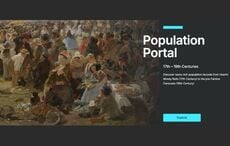Fintan O’Toole’s recent piece on Judge Kavanaugh misses basic facts of ethnic assimilation in the United States.
Let’s not read too much into Brett Kavanaugh’s enjoyment of Gaelic football in high school. It likely had very little to do with an affinity for famine suffering, or a desire to be seen as an ethnic victim or the member of a protected class. It probably had a lot more to do with the fact that he liked beer.
Whatever about the Catholic and Jewish make-up of our current US Supreme Court, wealth in the United States — and therefore economic and social power — remains concentrated most heavily in the hands of white Anglo-Saxon families. And there are smart, ambitious, hard-working families in every other ethnic group who want their sons and daughters to be accepted and included as equals in these most powerful and wealthy circles of Americana.
Read more: Irish Americans are full of self pity and fake victimhood says top Irish columnist

Image: Getty/Win McNamee
This remains true for many Irish American families today. And for some of these Irish American families, the Trump Administration is merely a political vehicle for social advancement.
But for many of us in Irish America, this has been a time of intense introspection and reflection. Most of us raised with an awareness of our own family’s immigrant stories, live with a desire not only to do right by our children and grandchildren but to act in ways that will make our ancestors smile. To love God. To love our families. And to love our country.
Contrary to Mr. O’Toole’s assertion, past oppression has, in fact, sensitized great numbers of Irish Americans to stand up against injustice, bigotry, ethnic cleansing, white nationalism, misogyny, and cruelty toward immigrants and refugees. Among those Irish Americans are Danny O’Connor and Conor Lamb both running for Congress this year. Beto O’Rourke in Texas. Congressman Richie Neal and Mayor Marty Walsh. Joe Biden and yours truly. As well as Congresswoman Carolyn Maloney, Governors Daniel Malloy, Terry McAuliffe, and Tim Kaine.
Read more: Brett Kavanaugh was pretty nasty to women in high school his Yearbook proves

Beto O'Rourke. Image: Paul Ratje/Getty
Yes, RFK died in 1968; but the immigrant memories of Irish Americans did not. Nor did our passion for social justice and our readiness to fight for a more perfect Union.
For great numbers of us in America, the election of Donald Trump has been a very humbling experience. We had thought fascist appeals would never succeed in the United States. We had thought we were somehow better than other nations. Thought we would never fall for a self-professed strongman promoting white nationalism, stoking economic fears, and promoting racial scape-goading.
How could 63 million Americans have voted for a man like this?
As an Irish American, this humbling experience has been made all the more painful by the presence of so many Irish Americans in the center of the most anti-immigrant, most anti-refugee, and the most religiously bigoted White House in modern times. Bannon, Flynn, Kelly and Conway just to mention a few. And Hennessy Tennessee tootles the flute and the music is something grand — if you are a white supremacist.
Read more: How does sex abuse survivor Kellyanne Conway keep working for Trump White House?

Kelly Anne Conway. Image: Gage Skidmore/Flickr.
But another discredit to old Ireland is that two successive Irish leaders have now traveled to the Trump White House on St. Patrick’s Day to shower Donald Trump with Irish legitimacy. “A big fáilte romhat,” and never mind about the caging of refugee toddlers at the border or the internment of brown-skinned Catholic immigrants in record numbers.
It would appear the Irish in Ireland care more about the annual party at the White House than they do about the behavior of the man in the White House. But then again, there are a lot of wealthy Irish Americans who like Trump. And so it goes.
Assimilation. Acceptance. Making it in America.
Money talks, shamrocks walk.
Great is our shame.
But truth and love will have the final word.
Martin O’Malley was governor of Maryland and a presidential candidate in 2016.
What are your thoughts? Let us know in the comments section, below.




Comments